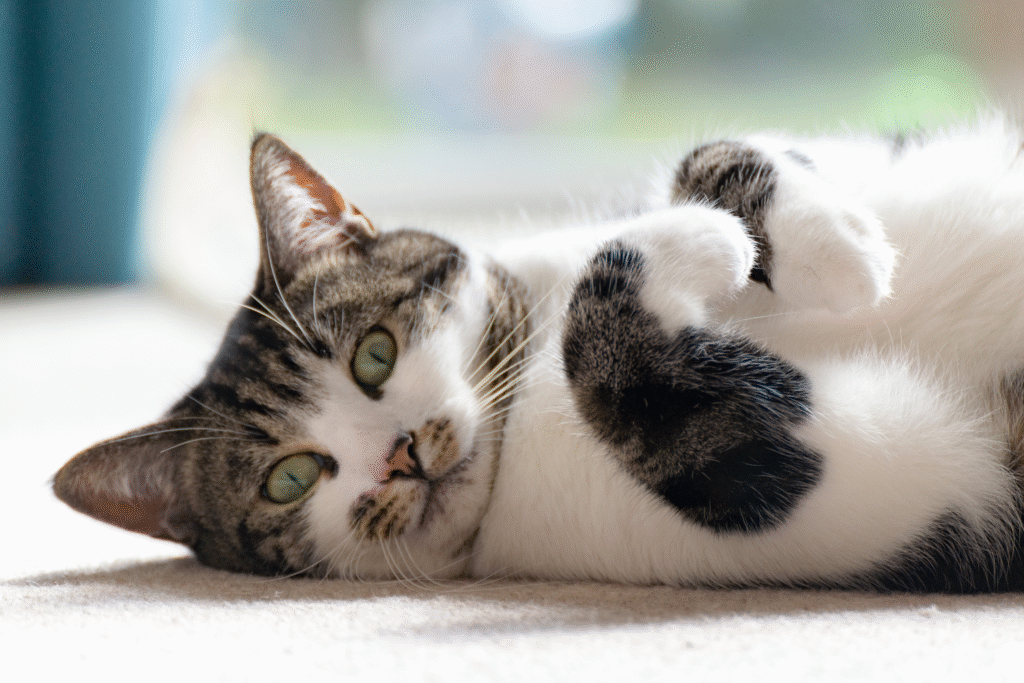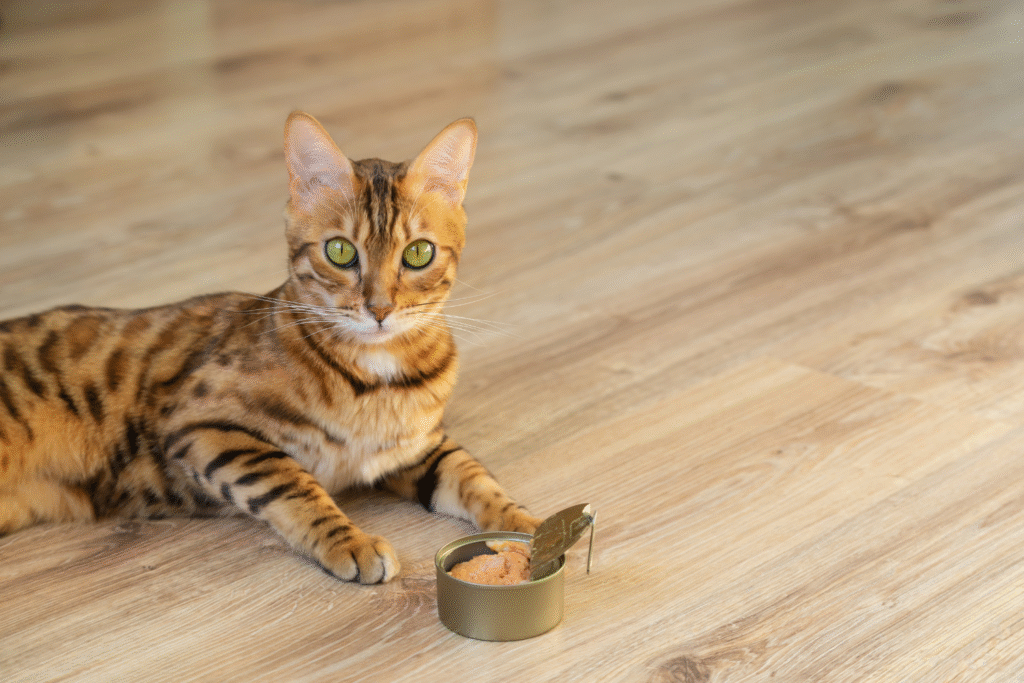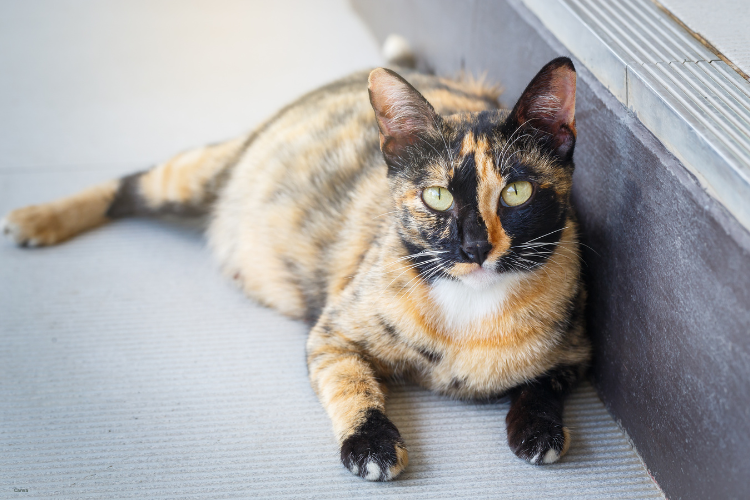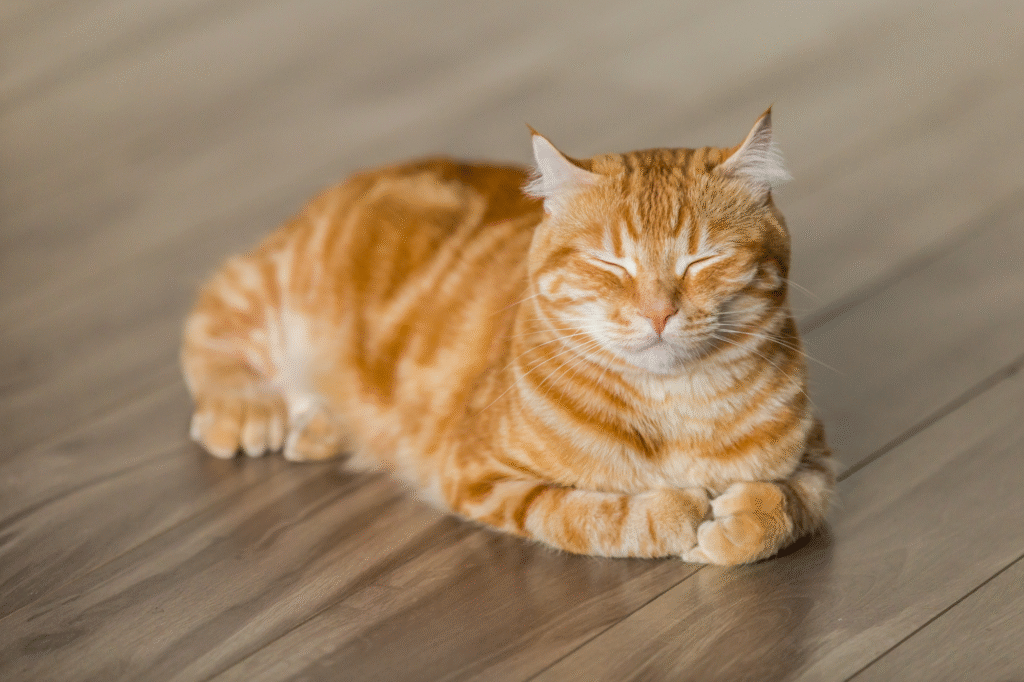Subtle shifts in cats often speak louder than words.

Cats have a way of masking pain so effectively that by the time symptoms appear, the problem is often advanced. Heart disease in felines is particularly deceptive, creeping in behind what seem like harmless quirks or sleepy moods. Yet, those small behavior changes can be clues to something much more serious. From changes in energy to odd sleeping postures, a cat’s actions tell stories that words can’t. Learning to read them early could mean catching heart issues while they’re still manageable. Each shift matters when silence is your cat’s only language.
1. Breathing faster or with unusual effort.

Rapid breathing is one of the earliest and most alarming signs of heart trouble. When a cat’s lungs start filling with fluid due to congestive heart failure, every breath becomes a struggle. You might notice faster breathing while resting, or that the chest and abdomen move sharply with each inhale. Some cats sit upright to breathe more easily. It’s subtle but serious, according to the Cornell Feline Health Center. The heart can’t keep up with oxygen demand, forcing the lungs to compensate. If your cat pants or breathes with its mouth open, it’s an emergency.
2. Sudden reluctance to move or play.

A cat who stops running, climbing, or showing interest in toys could be quietly signaling fatigue caused by poor circulation. When the heart can’t pump enough oxygen-rich blood, muscles tire quickly. Cats often retreat to rest more often or seem “lazy.” Sometimes owners confuse this with normal aging, but a rapid shift in energy levels can be a red flag. It’s the body’s way of rationing what little stamina remains, as stated by PetMD. What looks like calm indifference is often the first whisper of heart strain.
3. Unexplained weight loss or loss of appetite.

Cats with heart disease often lose weight even while eating normally—or stop eating altogether. When cardiac function declines, metabolism and digestion slow as blood flow decreases to the stomach. It’s an internal chain reaction that makes food less appealing. Owners may notice subtle changes at first, like skipping a meal or leaving leftovers behind. Over time, ribs become more visible. As reported by the American Veterinary Medical Association, reduced appetite and weight loss are common indicators of advanced cardiac disease. It’s one of those small shifts that quietly mark something deeper.
4. A swollen belly that seems to appear overnight.

Sometimes, the signs aren’t about energy or appetite at all but shape. A swollen abdomen can mean fluid buildup from right-sided heart failure. The cat might look like it gained weight, yet it’s not fat—it’s retained fluid. This makes lying down uncomfortable and walking awkward. The swelling can fluctuate, misleading owners into thinking it’s just “bloating.” But in truth, it’s the heart’s inability to manage pressure efficiently. That subtle roundness around the midsection deserves attention before breathing or eating becomes difficult.
5. Cold paws or ears that feel unusually clammy.

When circulation falters, the body redirects blood toward vital organs, leaving extremities cold. If you touch your cat’s paws or ears and they feel cooler than usual, it could signal that oxygen isn’t reaching those areas properly. This poor perfusion may also make gums pale instead of healthy pink. It’s not something most people check often, but it’s an easy home clue. In later stages, cold extremities appear alongside fatigue or rapid breathing—signs that the heart is under pressure and struggling to meet demand.
6. Hind-leg weakness or sudden paralysis.

One of the most dramatic signs of feline heart disease is when a cat suddenly loses use of its back legs. This can occur when a blood clot forms and travels from the heart to block circulation in the hind limbs—a condition known as feline arterial thromboembolism. The paws become cold, movement painful, and panic sets in fast. It’s a medical emergency that often reveals hidden heart disease. Even if mobility returns after treatment, it means the heart has already been working beyond its limits.
7. Sleeping upright instead of curling comfortably.

Cats normally sleep curled or sprawled in cozy spots, but those with cardiac issues may choose upright positions that relieve pressure on their lungs. They might sit in a loaf-like pose for hours, front legs extended or neck stretched out slightly to make breathing easier. It’s a subtle shift most owners dismiss as “a new favorite position.” In reality, it’s a coping mechanism. These posture changes, especially when combined with rapid breathing, hint that your cat’s lungs are struggling with fluid buildup.
8. Hiding more and avoiding attention altogether.

A sudden change from affectionate to withdrawn behavior often signals discomfort. Cats instinctively hide illness to appear less vulnerable. When heart disease progresses, fatigue and shortness of breath can make social interaction feel like work. You might find your cat resting in quiet corners or behind furniture more often. It’s not defiance—it’s exhaustion. These disappearances become more frequent as heart function declines, often mistaken for mood changes. Paying attention to these retreats helps catch illness before it turns critical, especially when paired with other subtle shifts.
